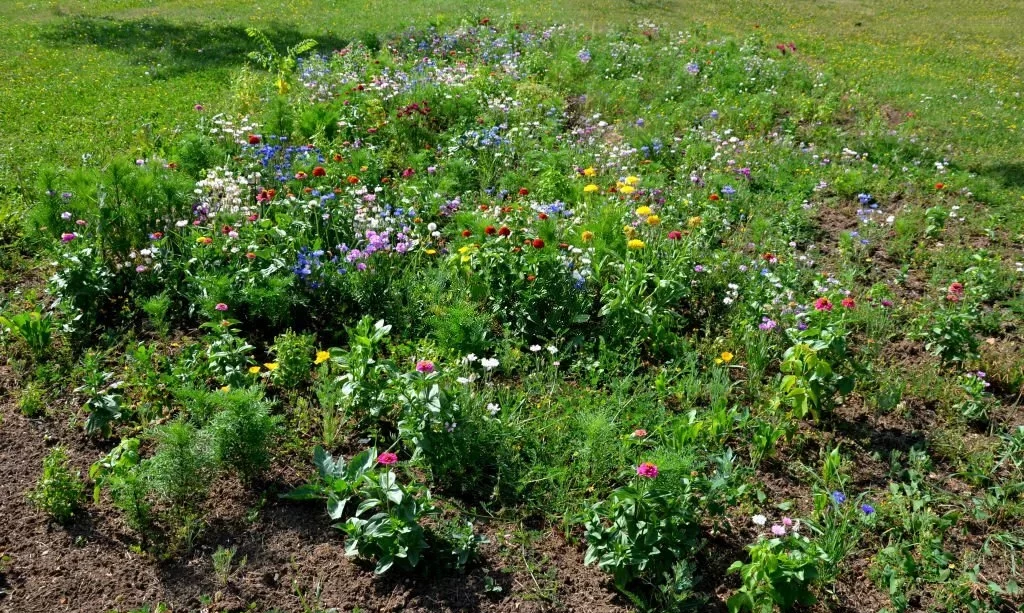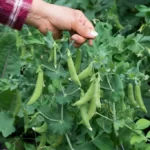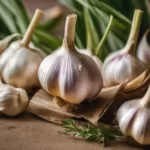In the heart of the Midwest, where rolling plains and vibrant ecosystems come to life, wildflowers grace the landscape with their natural elegance and ecological importance. Zone 5, with its distinct climate and rich soil, offers the perfect canvas for these native and adapted wildflowers to bloom in all their glory. However, the secret to a breathtaking wildflower display in Zone 5 lies in understanding the art of timing—when to plant these seeds for the most vibrant and thriving meadows. Join us on a journey to explore the world of wildflowers in Zone 5 and discover the ideal moments to sow the seeds for a picturesque Midwest landscape.
- Wildflower Pollinator Seed Mix: Includes Wildflower Pollinator Seed Mix (1lb Bag). Pollinator favorites mix is easy to grow and blooms beautifully all season.
- 18 Pollinator Friendly Variants: Coreopsis, Dill, Zinnia, Borage, Crimson Clover, Aster, Calendula, Purple Coneflower, Cosmos, Wallflower, Cosmos Sensation, Black-Eyed Susan, Cornflower, Sneezeweed, Ox-Eye Sunflower, Hyssop Lavender, Bergamot, and Prairie Clover.
- Protect the Pollinators: Protect the pollinators and save the planet by planting the wildflowers they adore! With Buzzy, creating your own pollinator garden is easy and fun.
- Unique Gift: This pollinator seed mix make great gifts, party favors, or prizes for weddings, baby showers, and other special event
- 100% Natural & Guaranteed To Grow: We promise that your seeds will grow or we’ll replace them, so you can be confident in your gardening endeavors!
Wildflower Selection for Zone 5
The wildflowers of Zone 5 encompass a delightful range of native and adapted species, each with its unique charm and ecological significance. When selecting wildflowers for your Zone 5 landscape, consider native varieties like the Black-Eyed Susan, Purple Coneflower, and the Ohio Goldenrod. These wildflowers are not only well-suited to the region’s climate but also play a vital role in supporting local ecosystems and pollinators.
Adapted wildflowers, such as the Lanceleaf Coreopsis and the Butterfly Milkweed, are equally beloved in Zone 5 for their vibrant colors and adaptability to the region’s growing conditions. By incorporating a mix of native and adapted wildflowers into your landscape, you create a haven for bees, butterflies, and other pollinators, promoting biodiversity and enhancing the natural beauty of the Midwest.
Zone 5’s Climate and Soil
Zone 5, known for its distinct climate and fertile soils, presents a unique canvas for wildflower enthusiasts. This zone is characterized by cold winters and warm summers, creating a dynamic and ever-changing environment. The rich, loamy soils that prevail in the Midwest offer a nourishing base for wildflowers to establish their roots and thrive.
The climate of Zone 5, marked by frosty winters and hot summers, dictates the timing of wildflower seed planting. Understanding the seasonal shifts in temperature is crucial for successful wildflower growth. The Midwest’s cold winters mean that planting in late fall or early spring is often the preferred time to ensure that the seeds have a chance to stratify and germinate.
Moreover, the loamy soils found throughout Zone 5 are well-draining and fertile, providing the ideal foundation for wildflower growth. With this knowledge of the local climate and soils, you’ll be better equipped to make informed decisions about when and how to plant wildflower seeds, ensuring a flourishing meadow in your Zone 5 landscape.
When to Plant Wildflower Seeds
The timing of planting wildflower seeds in Zone 5 is critical to ensure a successful and vibrant wildflower meadow. In this climate, two main planting seasons are preferred: fall and early spring.
- Fall Planting: Fall is often the best time to plant wildflower seeds in Zone 5. The period from late September to early November provides an ideal window. During this time, the soil is still warm from the summer, and the fall rains can help establish the seeds. This allows them to undergo a natural stratification process, mimicking the conditions that many wildflowers require for germination.
- Early Spring Planting: If you miss the fall planting window or prefer an alternative, early spring is the next best option. Planting wildflower seeds from late March to early April, as soon as the soil can be worked, can yield successful results. While some wildflowers may germinate later in the season, this is a suitable time to establish a new meadow.
Remember that wildflower seeds should be sown on well-prepared soil. Clear the area of existing vegetation and debris, prepare a smooth seedbed, and mix the seeds with sand or a suitable carrier for even distribution. Lightly tamp the seeds into the soil to ensure good seed-to-soil contact. Then, keep the area moist but not waterlogged during the germination period, which may take several weeks.
Planting Techniques and Care
Proper planting techniques and ongoing care are essential to ensure your wildflower meadow thrives in Zone 5. Here are some key considerations:
- Soil Preparation: Clear the area of existing vegetation and loosen the soil. Remove any weeds or debris to create a clean, receptive seedbed. Mix the wildflower seeds with a carrier material, like sand, to aid in even distribution.
- Sowing Seeds: Scatter the seed mixture evenly over the prepared area. Lightly tamp the seeds into the soil to ensure good contact. This can be done with a seed roller or by walking over the area.
- Watering: Keep the area consistently moist during the germination period. Regular, gentle watering is essential. Avoid heavy watering, which can displace seeds.
- Weed Control: Monitor the area for weeds and remove them as they appear. Weeds can compete with wildflowers for resources.
- Fertilization: Wildflowers in Zone 5 typically don’t require additional fertilization. The fertile Midwest soils are usually sufficient for their growth.
With proper planting and care, your wildflower meadow will flourish in Zone 5, creating a beautiful and ecologically significant landscape in the Midwest.
Nurturing Your Wildflower Meadow
Caring for your wildflower meadow in Zone 5 is an ongoing commitment that will reward you with a stunning and ecologically vital landscape. As the wildflowers begin to grow, maintain consistent soil moisture, particularly during the initial growth stages. Regular, gentle watering is essential, especially during dry periods. Be cautious not to overwater, which can lead to poor root development.
Weed control is crucial for your wildflower meadow’s success. Keep an eye out for unwanted vegetation and promptly remove any weeds to prevent them from competing with your wildflowers for resources. Mulching can help suppress weeds and conserve soil moisture, making it a valuable addition to your wildflower care routine.
As your wildflowers begin to bloom, the meadow will come to life with a burst of color and provide essential nectar sources for pollinators. Insect-friendly plants are key to maintaining local biodiversity and promoting a healthier ecosystem in Zone 5.
Conclusion
Planting wildflower seeds in Zone 5 is more than a horticultural endeavor; it’s a celebration of nature’s beauty and a contribution to the ecological well-being of the Midwest. Zone 5’s distinct climate and fertile soils offer a canvas for wildflower enthusiasts to create vibrant and vital meadows.
As you embark on your wildflower-growing journey in the heart of the Midwest, remember that it’s not just about the blossoms you’ll enjoy but the role your meadow plays in sustaining local ecosystems. Your wildflower meadow becomes a haven for pollinators, a burst of color in the landscape, and a testament to your commitment to preserving the environment.
With the right timing and care, your Zone 5 wildflower meadow will become a thriving and ecologically significant feature of your landscape, showcasing the Midwest’s natural beauty and the essential role of wildflowers in supporting local wildlife.




